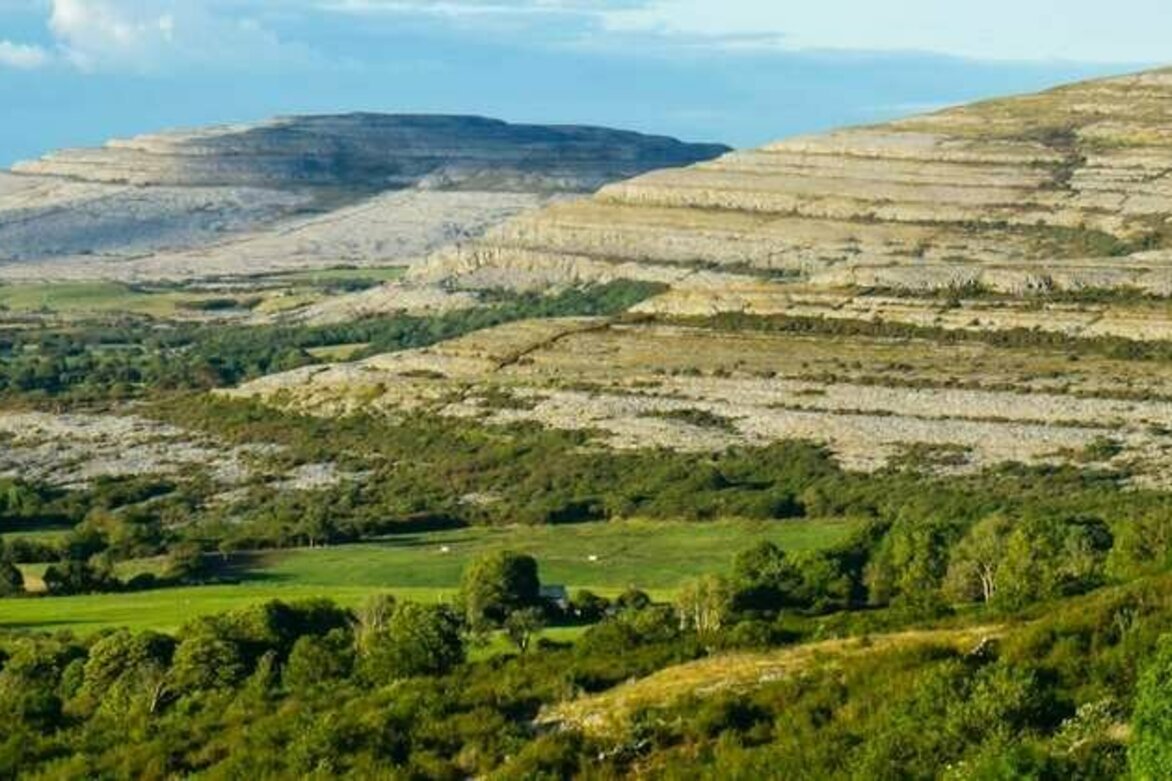When farmers and scientists collaborate, biodiversity and agriculture can thrive - here's how
The Conversation
01 Apr 2025

The Burren region of County Clare, Ireland, is famous for its distinctive limestone habitat, coastal landscape, rich wildlife and unusual archaeology. Several hundred farmers also manage livestock on this land.
As social scientists, we've been investigating how farmers engage with environmental management and biodiversity renewal in England and Scotland because there is an ongoing nature crisis, with accelerating species extinctions, loss of habitat and harmful pollution.
Our findings show that giving farmers greater opportunities to draw on their knowledge and experiences encourages better environmental results than conventional farming incentives.
Many environmental campaigners, including author and Guardian columnist George Monbiot, don't see farming as a way to help solve the biodiversity crisis.
But one EU-funded initiative, the BurrenLife project, has revolutionised how farmers and scientists collaborate by tackling reluctance or wariness and shifting mindsets through the practice of "conservation farming". This developed into an "agri-environment" (nature-friendly farming) initiative called the Burren Life programme which incentivises farmers in Ireland to prioritise nature by boosting endangered bird populations or restoring specific habitats.
Most (70%) of UK land is used for agriculture. Therefore success in tackling the biodiversity crisis depends on the active involvement of farmers.
From the 1980s successive UK governments have paid farmers to restore nature and mitigate the effects of climate change in the form of voluntary agri-environment schemes. These schemes, such as Countryside Stewardship and the Sustainable Farming Incentive, provide financial incentives for farmers to help restore biodiversity by, for example, planting flower-rich hay meadows.
But despite the billions of pounds invested and significant uptake by farmers, biodiversity continues to decline and more work needs to be done to improve farmers' participation.
Research suggests that the lack of effectiveness of those schemes is influenced by their limited capacity to inspire long-term changes in farming practices.
The clash between local knowledge and scientific expertise concerns us. Existing agri-environment schemes are prescriptive with limited options for farmers. This, combined with polarisation between farmers and conservationists about rewilding for example, means that local knowledge of farmers tends to be excluded from environmental decisions.
While conservation scientists hold essential knowledge for tackling the biodiversity crisis, farmers know their land best. Often this knowledge has been passed down from generation to generation. Historically, however, agri-environmental management in the UK has operated on the basis of prescriptions informed by scientific expertise that don't consider the land characteristics or specific context of particular farms.
By joining an agri-environment scheme, farmers are expected to take actions such as planting crops that can manage soil erosion and improve soil health, or managing hedgerows, which can act as wildlife highways. While farmers can choose which actions to take, such payment-by-action schemes don't offer much scope to adapt environmental solutions to their knowledge of the land.
Crucially, the lack of consistent monitoring provides farmers with few opportunities to report back on the success or failure of actions they have taken to recover nature. According to our research, farmers often feel their valuable on-the-ground knowledge is being ignored.
Unusually, the Burren Life programme relies on environmental targets that are co-designed by scientists and farmers. The co-design process involves farmer and adviser jointly walking the farm. Farmers explain what they'd willingly do to improve the condition of the land. The adviser then maps the activities they think will bring environmental benefits and devises an environmental plan accordingly.
Every year, farmers are given the opportunity to decide what they'd like to do. The presence of a local office of advisers means that support for management decisions is always available and feedback aimed at improving their environmental plan is consistently encouraged. Farmers are also involved in the monitoring of other farmers' actions.
Our research undertaken as part of the Renew project, which aims to develop solutions for biodiversity renewal in the UK, shows a strong appetite in the English uplands for the kind of flexible, farmer-centred, results-based approach promoted by the Burren Life programme.
The Burren Life programme was highly successful in many respects. It delivered major improvements in habitat quality and fostered long-term behaviour change among participating farmers.
It incentivised farmers to take ownership of their actions for nature conservation and restoration. They were encouraged to share their local knowledge through farm visits, annual programme reviews, feedback opportunities and monitoring exercises. That local knowledge could then be considered alongside scientific expertise by people making management decisions. The Burren Life programme effectively reconciled the farming perspective with the scientific one, in the form of conservation farming.
It has delivered impressive value for money. The total amount spent on the Burren Life programme totalled 12.3 million (Pound 10.3 million). Over ten years, this has resulted in habitat and landscape improvements worth 32.8 million.
Despite its success, several Burren farmers still regard environmental programmes as antithetical to farming so co-creation is a key step in inspiring people to get involved in projects like these. And replicating conservation farming beyond the Burren will require a tailored approach that considers the environmental and cultural characteristics of each countryside community.
Don't have time to read about climate change as much as you'd like?
Get a weekly roundup in your inbox instead. Every Wednesday, The Conversation's environment editor writes Imagine, a short email that goes a little deeper into just one climate issue. Join the 40,000+ readers who've subscribed so far.
